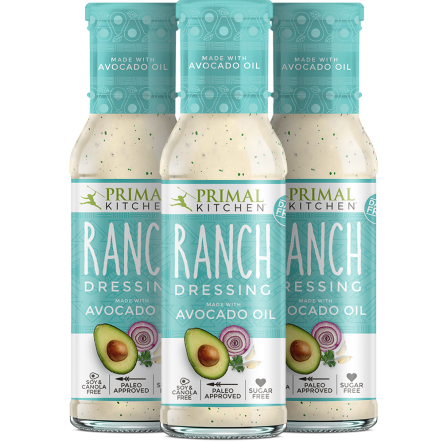Mark Sisson's Blog, page 203
November 13, 2016
Weekend Link Love – Edition 426
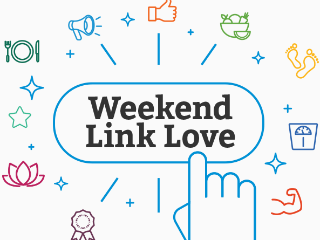 Research of the Week
Research of the WeekMainlining garlic for cold season? Have an apple over salad for the sake of those around you.
Dim light in the room when you sleep impairs cognitive performance the next day.
Doctors are over-diagnosing breast cancer.
An extra hour of sleep increases wages by over 1% in the short term and 5% in the long term.
Better pupils have bigger pupils.
Interrupting your sitting with frequent standing breaks increases mental alertness, reduces fatigue, and inhibits food cravings.
If you want to lower postprandial blood glucose, better to take a walk after you eat than at random throughout the day.
New Primal Blueprint Podcasts
Episode 142: Paul Greive: Host Elle Russ chats with rancher Paul Greive, who tells you how to navigate the tricky world of grass-fed labeling and explains what it’s like to raise grass-fed cattle in Southern California.
Each week, select Mark’s Daily Apple blog posts are prepared as Primal Blueprint Podcasts. Need to catch up on reading, but don’t have the time? Prefer to listen to articles while on the go? Check out the new blog post podcasts below, and subscribe to the Primal Blueprint Podcast here so you never miss an episode.
How to Harness the Self-Enhancement Bias (and Claim a Bigger Life)
My 7 Favorite Practices for Engineering the Good Life
Eating Insects: No Longer a Fringe Choice
Interesting Blog Posts
Here’s what they’re feeding diabetic patients in one Canadian hospital.
Media, Schmedia
People are embracing low-carb vegetable versions of pasta, rice, and other starchy carb foods.
Scientists insist that the microbiome will be a big player in personalized medicine.
Things I’m Up to and Interested In
Content I’m browsing: The slides from Dennis Mckenna’s recent presentation in Prague.
Product I’m both curious about and horrified by: VR food.
Podcast I enjoyed: One Primal Health Coach grad (Dr. Brian Peterson) interviewing another (Jasmine Cabrera) on the Unleash Your Gene-ius podcast.
Interview I gave: “Secrets of a Paleo Aficionado” with Focal Upright.
Clip I’m watching: The great escape.
Recipe Corner
Holidays are coming. Here are some paleo gingersnaps.
Got an Instant Pot (why not?)? Make curried cream of broccoli soup.
Time Capsule
One year ago (Nov 13 – Nov 19)
Should You Reduce Your Iron Intake? – Iron can be problematic for some people. Are you one of them?
A Case Against Cardio, Part 27 – Why most “cardio” is still terrible.
Comment of the Week
“This is definitely not the post to introduce the new girlfriend sporting a few extra pounds to the benefits of the paleo lifestyle“
– Maybe not, Jack Lea Mason.

The post Weekend Link Love – Edition 426 appeared first on Mark's Daily Apple.



November 12, 2016
Shrimp with Kimchi Mayo
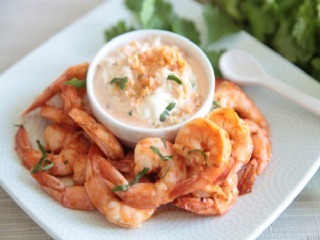 Here we have the rare Primal recipe that tells you to forgo homemade and instead use three store-bought condiments: Korean gochujang, kimchi, and PRIMAL KITCHEN™ Mayo. With this trio of ingredients, you can whip up a wildly flavorful shrimp appetizer. Plus, you’ll get some beneficial probiotic bacteria with every bite.
Here we have the rare Primal recipe that tells you to forgo homemade and instead use three store-bought condiments: Korean gochujang, kimchi, and PRIMAL KITCHEN™ Mayo. With this trio of ingredients, you can whip up a wildly flavorful shrimp appetizer. Plus, you’ll get some beneficial probiotic bacteria with every bite.
To make this addictive recipe, you’ll marinate shrimp in Korean gochujang, a fermented chili paste with a spicy and slightly sweet flavor. On the side, finely chopped kimchi is blended with Primal Mayo to make a full-flavored, pungent and creamy sauce for dipping. Quick, easy and delicious!
Servings: 4 appetizer servings
Time in the Kitchen: 25 minutes
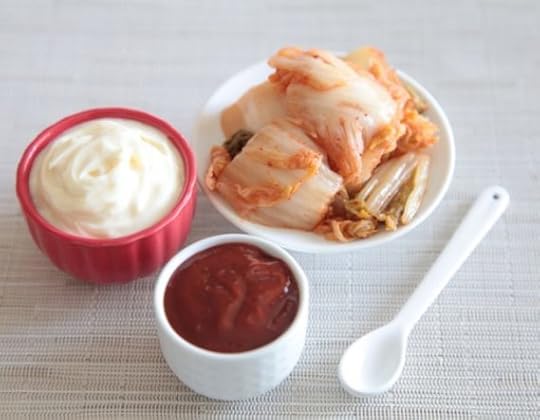
Ingredients
1 pound peeled, deveined shrimp (450 g)
¼ cup gochujang (also called kochujang)* (60 ml)
2 teaspoons honey (optional) (10 ml)
1 teaspoon unseasoned rice vinegar (5 ml)
1 tablespoon cold butter, sliced into small cubes (15 ml)
¼ cup finely chopped cilantro (60 ml)
½ cup kimchi (40 g)
1 cup PRIMAL KITCHEN™ Mayo (220 g)
*Buy gochujang made with rice, not wheat, and watch out for additives like HFCS.
Instructions
In a medium bowl, combine the kochujang, honey and rice vinegar.

Pat the shrimp dry. Add the shrimp to the gochujang marinade, and toss to coat. Spread the shrimp out evenly on a rimmed baking sheet. Drop the cubes of butter around the shrimp. Set aside, and preheat oven to 450º F/232º C.
In a food processor, process kimchi until very finely chopped. Add mayo. Pulse to combine. Add more kimchi (or mayo) to suit your taste.
Roast shrimp 3 to 5 minutes, depending on the size of the shrimp.
Sprinkle cilantro on shrimp. Serve warm or cold with kimchi mayo.
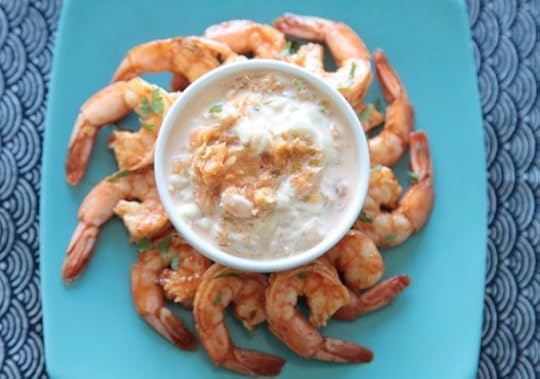

The post Shrimp with Kimchi Mayo appeared first on Mark's Daily Apple.



November 11, 2016
I’ve Never Felt Better in My Life!
It’s Friday, everyone! And that means another Primal Blueprint Real Life Story from a Mark’s Daily Apple reader. If you have your own success story and would like to share it with me and the Mark’s Daily Apple community please contact me here. In fact, I have a contest going right now. So if you have a story to share, no matter how big or how small, you’ll be in the running to win a big prize. Read more here.
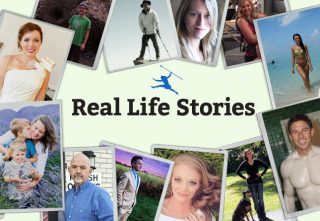
Dear Mark, This letter has been a long time coming. Like many of your readers, I had followed the standard American diet rather thoughtlessly, though I did experiment some with vegetarianism. I loved baking my own bread and even bought and ground my own flour. But though I was rather a skinny teen, I gradually ballooned up. And I do mean balloon.
I was so uncomfortable, nothing fit, and all my weight was around my stomach and my face. I knew I couldn’t go on like that. When I turned 40, we decided to get serious about our health and eating. My wife had also gained a lot of weight. We discovered Atkins, lost some and then fell off the wagon and added more back on. We tried again. This time my wife lost a ton, and so did I. I dropped back to about 155 or so.
Again, like so many, the weight began to creep back, even when I got stricter with my carbs. It was so frustrating! I never went back to the SAD diet that had gotten me in such sorry shape, but we were eating a ton of substitutionary foods packed with things like Splenda. Well, you get the idea.

Enough is enough, I thought. I can do this. I know I can. So I set my mind to be strict with my Atkins and up the exercise. My goal: to be fabulously fit by fifty. And I did a not bad job! I had the flexibility with my work to get in long gym hours and by dent of effort (in other words, chronic cardio), I gradually shaped up quite a bit. My cardio workouts were so insane on the step machine that I found out they called me the crazy man at the desk. One year in, I was very pleased with the efforts:
But, of course, there was no way I could keep up that insane workout schedule, and I had grown to hate the stepper and even resented the gym visits all the time. I certainly achieved my personal goal of fabulously fit by fifty, but my knees were killing me. I had taken up running, but found that I couldn’t keep on doing it. I felt like I had a pebble in my knee.
My wife and I were always learning, studying, trying to master this. We’d seen such progress, but… Then we read Wheatbelly and were blown away, and somehow that also led us to your website. It was November 2011. Before long things really did begin to change for us.

I gave the Vibrams and toe-strike running a try. Knee pain? Gone! I even ran the length of half marathon one year on a cruise ship in the Pacific as Baja floated past. It was insanely fun. Just did it because I could. I tried different workouts, but had difficulty sticking to anything for long. I was glad, though, that I had everything we needed at home. No more gyms sucking up my cash!
My wife and I began regular walks and have continued it to this day. We kept learning about eating. Tried some Whole 30’s and some other variations, but we’ve always returned to Primal. It’s just doable for us. We love it. I enjoy my square of chocolate and the occasional glass of red wine (Botabox cab is my favorite).
Exercise has become steady: I’ve settled into a routine these days of walking outside at least 10k steps Monday through Saturday, and taking it a bit easier on Sunday, but trying to get 5k. As I walk, I do 200 push-ups on Monday through Saturday (eight sets of 25 each). Additionally, at least two days a week I sprint. I tried sprinting on the bike and just dreaded it. Lately I’ve been sprinting outside and it has been great. I found that the key for me taking off is lifting high those knees. It picks up a little bit of speed at first and then it just takes off. I love it! Thanks to Mr. Money Mustache, my wife and I now ride our bikes up to church and for errands around town. Lots of fun.

Anywho, it’s been a trip and a half, and we are grateful to you and your generous spirit and the wonderful information you have provided us through all these years. When I noticed the Friday without a story, I thought: I need to write. I’ve scrounged info from your site for years and have not given back. So here’s my meagre attempt.
Tomorrow I will turn 56. I am 5 foot, 10 inches tall, and I weigh about 146 at present. Body fat hangs at about 12% and I’ve never felt better in my life. For the last two days, in fact, my wife and I tackled a tree that needed to come down in our yard. Pay someone to cut it? No way. We cut the sucker down with a handsaw and a pruning hook. Talk about feeling great. Anyway, my last pic is basically where I am now. This was a couple months ago on Father’s Day. Thank you, Mark. My wife and I are among the many thousands who are so thankful for what you do.
The post I’ve Never Felt Better in My Life! appeared first on Mark's Daily Apple.



November 10, 2016
How to Harness the Self-Enhancement Bias (and Claim a Bigger Life)
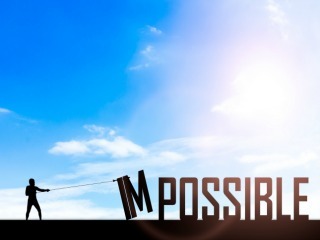 In yesterday’s post, “My 7 Favorite Practices for Engineering the Good Life,” I included a curveball of sorts—right at the end. Chase down fear.
In yesterday’s post, “My 7 Favorite Practices for Engineering the Good Life,” I included a curveball of sorts—right at the end. Chase down fear.
While all seven have been game changers, that one claims the pinnacle. The fact is, it’s the hardest one to embrace time and again, but it’s never ceased to move my life forward in very clear, tangible ways. Still, every time I have to talk myself through the same process.… How can I possibly take on something this substantial? What am I thinking? That one’s just too big, too complicated, too ambitious. This time, surely, you’ve overstretched, Sisson.
But in that moment I remind myself that those feelings don’t drive the bus for me. They won’t be the ones doing the work to make a vision happen (they never are). A stronger, bolder, more adept self-concept will be leading the charge. Because that’s what formidable challenges call for. If I want something big, resisting fear will keep me from it every time. If, on the other hand, I can bluntly tell fear, “You’ve met your match,” suddenly the game looks much different.
When we take on a significant health goal, when we’re staring down what it can take to lose 100 pounds or run a half marathon or beat back an autoimmune disorder or start what will be a new life or lifestyle, it can seem like meeting the impossible. A stronger person, a better person, a more disciplined person might do this, we think.
But not a different person, I’d add. It’s simply time to tap a dimension of self that already exists, listening to the inner voice that says with all the daring of an 8-year-old on a dirt bike, it’s go time.
In the moment of gazing down a long, steep trail from those handlebars, you have a choice about how to see yourself. It’s much the same as when you face any challenge—a snarling predator or life and limb emergency, but the choice might feel more automatic then…and for good reason.
Researchers have identified something called the “self-enhancement bias,” a pattern in the human psyche that naturally moves the needle of our self valuation toward the positive. It describes a range of behaviors that sway our confidence contrary to what an empirical assessment might suggest about our present abilities or willingness.
And its evolutionary logic moves us. We feel emboldened to take a bigger risk, a greater chance than we might otherwise take if we sat in front of a pro and con list. Greater risk could mean greater danger, but it could also mean greater benefit. Audacity only had to help just enough to be adaptive, and the social (and mating) status advantage would’ve been an undeniably powerful factor in the cost-benefit analysis—not necessarily to the individual in the moment but to the overall evolutionary picture. (PDF)
Of course, the ethics of small band society and the ultimate threat of death or dismemberment likely kept this instinct in check. Bravado is different than confidence, and bravery looks decidedly different than foolhardiness. I’ll admit it’s an urge we need to use carefully and consciously.
Still, I think there’s something essential here that often gets missed. It’s easy to spend so much time focused on the negative self-talk—the social, cultural and familial layers of baggage some of us carry—that we lose sight of what’s innate in us, the power that exists untapped.
What if we could get quiet enough to let that old, gutsy instinct rise to the surface? What if we could learn to listen to its message, feel its energy? Trust that it courses through us, too? What if we could imagine that this instinct can move us beyond the limitations of what has been true for us in the past? What if we could get out of the way and let it do the work of enhancing our own self-efficacy? What if we could retrieve the emboldened self, believe it, and put it in the driver’s seat toward our goals?
I’m not saying that substantial change doesn’t depend on the regular practice of sensical tactics, scientifically rooted strategy. We want a new life, we have to live new details. But as I mentioned above, we may also need to live out of a new belief—and a lot more nerve.
Can we harness this peripheral primal tendency? If we feel too distanced from it by the sediment of experience, can we reconnect with it—to see ourselves in a bigger way, a broader story? It may just be that reclaiming this drive will be what cracks the parameters that have unnecessarily defined us and what we feel is possible.
Thanks for reading, everybody. Have a good end to the week.

The post How to Harness the Self-Enhancement Bias (and Claim a Bigger Life) appeared first on Mark's Daily Apple.



November 9, 2016
My 7 Favorite Practices for Engineering the Good Life
 I’ve never strayed from my basic assertion that the Primal Blueprint is about attaining hedonism congruent with good health. So, when I talk about engineering the good life, I’m not sacrificing health, or wellness, or fitness. I reject the assumption that enjoying oneself implies degrading one’s health. That’s often true, but it doesn’t have to be.
I’ve never strayed from my basic assertion that the Primal Blueprint is about attaining hedonism congruent with good health. So, when I talk about engineering the good life, I’m not sacrificing health, or wellness, or fitness. I reject the assumption that enjoying oneself implies degrading one’s health. That’s often true, but it doesn’t have to be.
That said:
Engineering the good life often requires that you sacrifice immediate pleasures for lasting ones.
Engineering the good life is about removing negative inputs as much as it is about adding positive ones. If a negative input confers momentary pleasure, removing it will remove some pleasure but add more.
Let’s dig right into my 7 favorite ways to engineer the good life.
I honor my circadian rhythm.
Everyone and everything is vying to extend the hours we spend awake. I mean that literally. Netflix’s founder recently named sleep as their prime competition. It’s tempting to check your email one last time, watch just one more episode of the latest streaming sensation, or wade into a futile online argument before bed. I know how important sleep is, yet I’m still drawn to sacrifice it for a little momentary pleasure.
The pleasure I get from consistently sleeping well trumps anything that would disrupt it. Sleeping well boosts memory, helps you retain new skills, and keeps the brain healthy. When you go to bed at the right time, you’re more likely to wake up without needing an alarm, so your day doesn’t start with a jarring blast of cortisol. Your skin is more resistant to UV damage when you’re in bio-rhythm, so you can enjoy the outdoors and get the vitamin D you need. Plus, good sleep itself is pleasurable. There’s nothing quite like sinking into bed with a good book and letting slumber envelop you.
Equally important for circadian health is light exposure at the right times. Every morning, I greet the sun and flood my visual receptors with natural light. Every evening, I dim the lights, light some candles, put on some blue-blocking safety goggles, trigger flux on the computer, and limit or eliminate the presence of circadian-disrupting blue light.
I don’t stress over my food.
This might sound rich coming from a guy who writes research-laden recommendations about which foods are healthiest to eat. Bear with me.
Does it do you any good at all to worry about the plate of French fries you just ate or the piece of birthday cake you picked at? Sure, if you’re gluten-sensitive, you might need to gird your body for some explosive happenings in the near future, but stressing over the immediate past is silly. Based purely on the observable laws of physics, the past doesn’t exist. It’s not even there.
I know that a single indulgence won’t kill me. It won’t hurt me. It’ll have a negligible effect on my body composition and body weight.
And for those who claim that slipping up sends them spinning into a week-long binge, that’s only because you’re so fatalistic about your indulgences. Loosen up and you won’t feel compelled to binge.
Plus, sometimes we actually want to eat “bad” food for the sheer sensual pleasure it provides. You can’t truly enjoy your indulgence if you’re worried about what it means for your health.
I don’t stress over my training.
Sometimes we skip training. Sometimes we skip days of training. And for those of us aware of how important training is for our physical and mental health, missing a workout or three weighs heavily.
Just like food “mistakes,” it doesn’t make sense to worry about skipped workouts. Took me awhile to learn this. Here’s how my missed workouts used to go:
I’d feel guilty all day about not going to the gym (or going for a run, etc).
My work and family time would suffer because the guilt sat in the back of my mind, clogging up the gears.
By evening, I was guilty about the missed workout and the lack of productivity and the poor quality family time.
Right before bedtime and unable to relax, I’d finally go hit the gym for a brutal session. Come back, stew in my cortisol soup and wait for my melatonin secretion to pick back up.
Go to bed late and sleep poorly.
Now? I just let it go. My muscles aren’t gonna waste away. My fitness isn’t going to degrade, and I’ll likely be more rested for when I do train.
I move every single day.
At my age, if I don’t move every day, I feel it. Motion is lotion. You’re not just improving the quality of your peripheral tissues and their interactions. You’re lubing up the neuromuscular connections in your brain responsible for the movements. Remember: neuroplasticity can go the other way. If you’re not moving, you’re teaching your brain to prune the “unnecessary” connections that facilitate movement.
I don’t train every single day (see the previous section). But I do something. Maybe a morning movement routine. Maybe some play. Maybe a long walk or hike. Maybe some slacklining. Maybe a bunch of “workout snacks” strewn throughout the day, like pushups and squats and pullups done whenever I feel a little stale.
I tolerate hunger.
For obvious reasons that I’ve discussed many times before, allowing yourself to get hungry or outright skip meals is beneficial. It’s good for your brain, your body composition, and probably even your lifespan.
But going hungry is also congruent with the good life. So many of us grab a handful of nuts or bag of jerky or piece of fruit at the slightest hint of peckishness. We do not tolerate hunger, and most of us never have true food insecurity, so it’s entirely up to us if we want to feel hunger or not. When we eat, it’s usually out of boredom. It’s something to do to pass the time. But true hunger is the best spice. When you’re satisfying a foundation of Maslow’s hierarchy of needs, a basic physiological requirement, even mundane meals become gourmet.
Going hungry also upregulates ghrelin, which most people think of as a “hunger hormone,” but also increases our ability to learn new skills or facts and come up with creative solutions to existing problems. Back when hunger meant something, ghrelin probably enabled the successful acquisition of food. In other words, hunger increases hunger for knowledge, makes us more productive, and motivates us to do great and interesting things.
I slow down time.
Our time is all we have. And the speed at which it appears to pass determines how long we have on this planet. There’s no use living long if you’re not aware enough to perceive and appreciate it. So there are a few things I do on a regular basis to make sure I’m not letting time flit by without noticing:
If I find myself going through the motions and unable to recall precisely what happened the previous week, I introduce some novelty. I’ll try a new workout, hike a new trail, take a new route when walking the dogs. I’ll plan a vacation to a new place (so I’m anticipating it). I’ll try a new restaurant. New experiences slow the passage of time because our brains must focus and pay attention.
I’ll go into nature. Nature is my refuge from the world of schedules and routines and clocks and alarms and responsibilities. Out there—in the waves, in the trees, in the hills—moments hew not to objective ticks and tocks but to the attention you pay them.
I avoid boredom and chase fear.
If something bores me, I know it’s a waste of time. Things that arouse no passion in either direction are antithetical to the “good life.”
But if I’m fearing something, if something makes me nervous, I should probably inspect it. Starting the blog way back in the day was a little scary. I wasn’t sure if it was going to work, and a year into it I still had no idea. But I kept up with it because it was a risk. I knew it could really pay off.
This isn’t immediately pleasurable. I mean, it’s downright scary and anxiety-inducing. But facing your fears offers many returns.
Once it’s all over and you realize it wasn’t so bad (it never is), you’re relieved.
Once it’s all over and you’ve just defeated fear, you’re equipped to handle it again.
Once it’s over and you realize you just did something previously thought impossible, you’re a better, more confident person.
Once it’s over and you begin seeing returns on your investment.
I chase fear within reason of course; some things are scary because they’ll likely kill you. I’m not seeking the company of hungry mountain lions or trying to sprint across the PCH at rush hour. If you remember my post on reframing stress to view it as physiological preparation for important events, this is very similar. It really does work.
Okay—those are my 7 favorite practices and philosophies for engineering the good life. I’m always looking for more, though.
What are yours? How do you ensure you’re living a pleasurable existence that also promotes good Primal health? Let me know down below!
Thanks for reading, everyone. Take care!
The post My 7 Favorite Practices for Engineering the Good Life appeared first on Mark's Daily Apple.



November 8, 2016
Eating Insects: No Longer a Fringe Choice
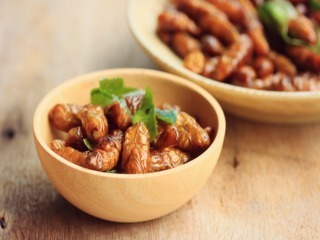
Three years ago, my pal Gabi Lewis—founder of Exo, who make the best cricket protein bars on the planet—made a compelling case for eating more insects. Today, I’ll build on these arguments and, based on new evidence, offer even more reasons you should consider incorporating edible insects into your diet.
Though few people reading this consider insects anything but a novelty, for many human cultures they were (and are) staple foods. Humans have been eating insects for millions of years, starting with our distant ancestors and continuing through the present day.
Fecal fossils (coprolites) from Mexico show evidence of prehistoric consumption of ticks (evil bastards), ants, larvae, lice, and mites. Both the Bible and Koran permit insect consumption, particularly of locusts. Aristotle snacked on cicadas. The Hadza of Tanzania love wild honeycomb with bees still nestled in the wax cells. Thailand has incredible outdoor bug markets, with baskets of spiders and crickets and dragonflies and scorpions and entire ant colonies (queen, workers, soldiers) ready to be eaten. Chapulines, stir-fried crickets in chile and lime, are my go-to appetizer anytime I visit a Oaxacan restaurant.
The squeamish are the weird ones.
It makes sense, doesn’t it? Insects are plentiful and tend to travel in bunches, particularly in tropical climates. You can grab ’em without tools or ridiculous amounts of planning and coordination. Depending on the insect, hunting it won’t get you killed (stung, maybe). They’re a relatively easy-to-obtain, difficult-to-extinguish, reliable source of animal protein. Not every eland hunt was successful, after all.
Okay, but why does this matter for the average Westerner already eating quality animal foods?
I get the sustainability argument. Insects reproduce rapidly, consume very few fossil fuels, require less water and food than cattle to produce the same amount of calories, protein, B-vitamins, vital minerals, and essential fatty acids.
According to a 2013 FAO report, broader incorporation of edible bugs could balance the worldwide food (and animal feed) supply and provide animal protein at a lower price-point and ecological footprint to those who desperately need it but aren’t in a position to eat pasture-raised, shade-grown, gluten-free beef.
Insects are clearly a promising avenue for populations who can’t afford or obtain precious animal foods. What about someone like me—who can afford and obtain high quality pastured meats?
What’s in it for me?
Entomophagy is mandible-to-abdomen eating
Eating the whole animal is the goal of most conscious meat-eaters. It’s more sustainable—no waste. It’s more nutrient-dense—you eat organs, connective tissue and muscles, not just the latter. But it’s a pain, since we buy everything piecemeal these days and not every bit is even available. When you eat an insect, you eat the whole animal. I’ve love access to grass-fed cattle the size of mice that I could pop into my mouth whole, but that’d take some serious genetic engineering. Insects (along with shellfish and small fatty fish) work for now.
Insects offer copious nutrition
In one recent study, researchers compared the mineral contents of four edible bugs—crickets, grasshoppers, mealworms, and buffalo worms—to that of good old beef. Both crickets and grasshoppers had more iron than beef, and other minerals like magnesium and calcium were more bioavailable from bugs than the same ones found in beef.
A previous overview (PDF) of the insect nutrition literature by the UN’s Food and Agriculture Organization (FAO) is worth reading. Here are some of its findings:
A 3-ounce serving of mopane caterpillar provides over a gram of potassium, half the calcium of a glass of milk, almost half the RDI of magnesium, 200% the manganese RDI, 400% the iron RDI, 100% the copper RDI, and more zinc than beef.
Most insects are extremely high in thiamine (B1) and riboflavin (B2), and a great many are high in B12.
Insects have chitin
An insect’s exoskeleton is made of chitin. If we have enough chitinase, the enzyme that breaks it down, we can convert chitin to chitosan. if we don’t produce chitinase, chitin has the potential to act like fiber. Why does this matter?
Chitosan is a cool compound. There’s very little study into it, but it may increase fecal excretion of dioxins and PCBs (two prominent xenoestrogenic compounds) when eaten before breakfast, help people lose weight, and lower oxidized LDL.
Fiber is also helpful. If we can convert “animal fiber” (various connective tissues like cartilage and tendons) into short-chain fatty acids, I wouldn’t be surprised if “bug fiber” has similar effects.
Is it happening?
I think so.
Exo is doing very well. I’m happy to have invested in them.
The consumer response to cricket products has overwhelmed supply. People are eating it and making products out of it faster than they can make the stuff. That’s going to drive innovation.
Not too long ago, the EU released a report recommending a variety of insects, including houseflies, crickets, and silkworms, for use as human food and livestock feed. I’m not sure edible houseflies will ever catch on as human food, but otherwise it looks credible.
According to a recent survey, about a third of Americans are “interested in eating more bugs.” That number is trending upward, too. Another study found that youth, especially males with “weak attitudes” toward meat, are increasingly open to eating insects. The more concerned they were about environmental issues, the more likely they were to be on board with insects as a significant portion of their diet.
I expect some developments moving forward:
Greater realization of insects’ potential as a savory ingredient
Right now, the majority of insect flour products on the market are on the sweeter side, incorporating dates and other sweet fruits as binders. In contrast, most insects were and are traditionally consumed as salty, savory foods, like the grilled dragonflies of Bali, the fatty witchetty grubs of the Australian outback, or the spicy, salty, citrusy chapulines of Oaxaca. I think that’s the next culinary frontier for entomophagy—celebrating, rather than hiding the flavor of the bug itself.
More tinkering with insect feed
Just like chickens and pigs, the fatty acid composition of an insect depends on the fatty acid composition of its feed. If you raise a cricket on the same soy and corn garbage we give pigs and poultry, that cricket will have a ridiculous amount of linoleic acid. If you roast and grind that cricket into cricket flour, you’ll damage a lot of the fragile PUFAs.
On the other hand, if you put more thought into that cricket’s feed, you’ll be able to create better fatty acid profiles. Feed it algae, and you might boost the EPA/DHA content. Feed it more MUFA and SFA, you get a cricket higher in both fats that can withstand roasting and grinding.
Better mass-market eggs
Chickens are avowed omnivores if you let ’em, feasting on lizards, frogs, and as many insects as they can find. The ancestral environment of the chicken—southeast Asian jungles—teems with insects. Pastured chickens produce incredible eggs, and it’s not only—or even mostly—caused by all the weeds, greens, and grasses in their diet. Equally important are the insects they get to eat. Right now, non-pastured chickens might get a few grubs or mealworms as treats. It’s not enough to change the quality of the eggs.
As bug farming gets easier, cheaper, and bigger, I expect feed insects will replace a large portion of the corn, soy, and corn-and-soy byproducts that currently comprise poultry feed. And the eggs will get much better.
All in all, I expect big things. Bugs will get cheaper and tastier. Producers will get better at raising them, and the food and restaurant industries will get better at preparing them. Consumers are growing more open to the idea of eating them, so demand will rise. Growing populations will need the vitamins, minerals, fats, and protein only animal foods can truly provide, and insects will be an obvious solution.
But it’s not a foregone conclusion. As a member of the Primal community, you drive this train. If anyone’s going to get the ball rolling, it’s you all.
So get on it.
Try Exo bars.
Go down to the local Oaxacan restaurant and try the chapulines.
Find a restaurant near you serving insects.
Or order your own and start experimenting in the kitchen.
That’s it for today, folks. Now let’s hear from you.
Have you eaten bugs yet? What’s your favorite? If not, what’s stopping you?
Thanks for reading!

The post Eating Insects: No Longer a Fringe Choice appeared first on Mark's Daily Apple.



November 7, 2016
Dear Mark: Meditation for Neuroplasticity, Astragalus, and Red Light Therapy

For today’s edition of Dear Mark, I’m answering three questions from readers. First, did I mess up by not mentioning meditation in the neuroplasticity post? Yes, and you’ll find out more below. Next, what are my thoughts on taking astragalus for fighting off colds and flus? Does it work? And finally, does red light therapy have the potential to reduce chronic pain? Does it do anything else?
Let’s go:
I’m sorry that meditation is not mentioned, but magic mushrooms are. Meditation increases white matter in the brain (which influences efficiency of electrical signals in brain), and lessens shrinkage due to age. Meditation also has a positive influence on the preservation of telomere length and telomerase activity (when these shorten, we experience adverse aging effects). I would much rather do it the natural way (via meditation) than taking a chance with hallucinogens.
Susan Grace
Thanks for your comment, Susan. This is why I love my readers. They call me out.
Everything you say is true. Meditation is a powerful trigger for neuroplasticity.
Mindfulness meditation can undo stress-induced changes to connectivity in the amygdala (the “fear” center).
Experienced meditators show enhanced neural plasticity and even structural changes to the brain (both gray and white matter).
Like seemingly everything else out there, the relationship between meditation history and neuroplasticity follows a U-shaped curve. Beginners show less neuroplasticity activation than more experienced meditators, who show more activation than advanced meditators. How can this be?
Beginners aren’t doing much. They’re just trying to learn how to make those connections, so the activity is minimal.
Experienced meditators (average of 19,000 practice hours) are in the active learning phase. To reach the desired state, they really have to work hard. The connections are lighting up.
The expert meditators (average of 44,000 practice hours) already have those changes established in their brains, and it takes less effort to maintain and activate them.
And one thing people should keep in mind: Trying to meditate but “failing” isn’t actually failing. It’s the attempt that’s the entire point. Learning to juggle, walk a slack line, or anything else that feels impossible at the start activates neuroplasticity. Failure is a necessary component of learning and brain remodeling.
As for the psychedelics, I absolutely agree that they can be more risky. Being one of the more powerful inputs a person an introduce to their brain, the psychedelics require more respect, caution, and planning than other plasticity inducers. That’s why I recommend that people wait for legalization (or decriminalization), or at least ensure they’re with someone experienced whom they trust. Note that the majority of psychedelics, including psilocybin, have sky high LD50s; it’s almost impossible to consume enough that you reach toxic levels.
Hi Mark! Last year my family and I were hit hard by cold and flu season, and this year I want to be prepared! A naturopath friend suggested astragalus. Can you tell me more, like whether it’s worth it and the best way to take it?
Astragalus, one of the foundational herbs in traditional Chinese medicine, certainly affects the immune system.
It can modulate the Th1/Th2 cytokine balance in asthma (mouse model), reducing lung inflammation.
Including astragalus polysaccharides to a bird flu vaccine enhances the immune response to the shot (in chickens).
It’s moderately effective against nasal congestion in people with hay fever.
In humans, astragalus tincture activates T-cells, a type of immune cell that helps fight infections.
But we don’t have any hard data showing that it can fight flu or cold infections. I do think it’s very plausible and probably possible.
I’d say it’s worth a try, as long as you’re not spending more than $20-30.
But don’t forget about good old crushed raw (or almost raw) garlic—in my opinion the best anti-cold “supplement” around. Garlic can improve immune function and reduce the occurrence of common colds. Whenever I feel a cold coming on, I’ll crush and dice up an entire head of garlic and lightly simmer it in a big mug of bone broth. You can also try aged garlic, which may be even more potent.
I’ve had chronic pain for years, which has definitely lessened since I went Primal last year! But I still have lingering issues. I keep hearing about red light therapy for chronic pain, and I know some gyms and other facilities market it as a selling point. Have you tried this? Is there anything to the idea?
There’s definitely something to it. It’s not some fringe therapy lacking support in the literature:
In patients with knee osteoarthritis, red light therapy reduced pain scores and increased microcirculation in the knee (which could portend healing).
A 2012 review concluded that red light therapy does reduce joint pain. An earlier review found that it reduces pain specifically in chronic joint disorders, which is good news for you.
It’s even been shown to improve neuropathic pain.
There are other effects, too.
Red light exposure increases blood flow to the skin and improves fracture healing. There’s even evidence that pretreatment with red light prepares your skin for a healthier response to UVB. Makes sense, doesn’t it? Think about those beautiful quiet mornings. You step out the door, gaze toward the sunrise, and everything looks otherworldly. The light has a different quality—it’s actually slightly red from coming in at a different angle and passing through “extra” atmosphere.
Then midday rolls around and the sun is blasting down the bluer, hotter stuff. But because you were there for the sunrise (weren’t you?), your skin is ready.
Go for the red light therapy, and let me know how it goes.
That’s it for today, everyone. I’d love to hear from you. Any experience with meditation, astragalus, and/or red light therapy?
Thanks for reading and take care.
The post Dear Mark: Meditation for Neuroplasticity, Astragalus, and Red Light Therapy appeared first on Mark's Daily Apple.



November 6, 2016
Weekend Link Love – Edition 425
 Research of the Week
Research of the WeekHere’s a weird promoter of neuroplasticity I didn’t see coming: allergies.
Replacing diet soda with water sped up weight loss in obese women.
The world of virtual eating (both taste and texture) is upon us. Don’t mind the facial electrodes.
New Primal Blueprint Podcasts
Episode 141: Aaron Alexander: Host Elle Russ chats with Aaron Alexander, who wears many hats: personal trainer, connective tissue specialist, Rolfer, licensed manual therapist. If you’re interested in the interplays between mind, body and movement, listen to this podcast.
Each week, select Mark’s Daily Apple blog posts are prepared as Primal Blueprint Podcasts. Need to catch up on reading, but don’t have the time? Prefer to listen to articles while on the go? Check out the new blog post podcasts below, and subscribe to the Primal Blueprint Podcast here so you never miss an episode.
Embodiment for Emotional Health: Is Mindful Movement a Primal Key?
10 Nutrient Optimizing Tips for the Primal Enthusiast
Why the Blood-Brain Barrier is So Critical (and How to Maintain It)
Interesting Blog Posts
How accurate are those companies that recommend optimal training regimens based on genetic analysis?
Maybe Ancel Keyes didn’t get everything wrong.
Media, Schmedia
Earlier this month, Soylent had to recall their new food bars because they were making people sick. Now Soylent’s pulling their flagship powder for the same reason.
How infections may be the cause of childhood obesity, rather than antibiotics.
The NY Times raises questions on GMO claims about yield boosts.
Everything Else
In the future, we may be able to turn off the genes responsible for nightmares.
Higher HDL isn’t necessarily better.
More clues for longevity—raw eggs, cookies, remaining independent.
Damn.
Things I’m Up to and Interested In
Concept I’m playing with: Sleep and wakefulness are not binaries. It’s a spectrum.
Product I’m cooking with: This week was the official release of PRIMAL KITCHEN Ranch™ on PrimalBlueprint.com. Thanks to Civilized Caveman for yesterday’s killer ranch recipe.
Product I wish I’d thought of: $66 (with $15.50 for shipping) frozen collard greens from Neiman Marcus. Right on time for Thanksgiving!
Articles I’m pondering: “Global chain restaurants are the future of food.”
Podcast I enjoyed doing: I got a chance to talk extended longevity with The Optimized Geek.
Podcast I can’t wait to listen to: Joe Rogan chats with Wim Hof, the Iceman.
Miscellaneous news I enjoyed: DNA testing cleared a dog on death row.
Recipe Corner
Why haven’t I ever thought of roasting whole cauliflower?
It’s not really cold enough around here to warrant stew, but this slow cooker beef stew with autumn vegetables is worth it.
Time Capsule
One year ago (Nov 6 – Nov 12)
Blindspots Even Informed Paleo Enthusiasts Often Have – Are your blinders on?
15 Alternatives to Sitting Meditation – No mantras or yoga mats required.
Comment of the Week
“Liver: If you’re brave enough, eat it raw as a smoothie. I add coconut milk, a handful of blueberries, and cinnamon to a half pound of liver, and blend. It’s surprisingly delicious, and without the bandaid-y flavor of cooked liver.”
– This liver smoothie recipe from His Dudeness is legit, but I mostly want to highlight the lyrical genius of “bandaid-y.”

The post Weekend Link Love – Edition 425 appeared first on Mark's Daily Apple.



November 5, 2016
Buffalo Ranch Chicken Stuffed Jalapeños with Bacon
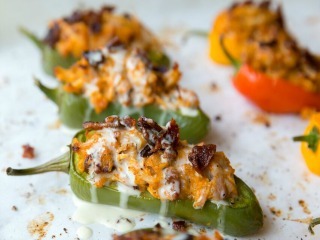 Today’s guest recipe was written by George Bryant, author of The Paleo Kitchen and founder of Civilized Caveman.
Today’s guest recipe was written by George Bryant, author of The Paleo Kitchen and founder of Civilized Caveman.
I’m elated to share this recipe with you, but first let me introduce myself. I’m George Bryant, a.k.a. Civilized Caveman, and you can check me out at my home base, Civilized Caveman Cooking. My passion is helping people to achieve their goals and dreams and to live a life they love. I do this in our Hugs & Bacon Tribe, teaching people weight loss, fat loss, movement, mindset, and so much more.
But enough chit chat… Let’s talk about ranch dressing. Looking at this recipe, you might think it’s about the peppers or filling. It’s not! This recipe was created for one reason and one reason only: so I would have an excuse to eat more of this ranch dressing.
This is a big deal for me. In my lifetime pursuit of optimal health, I have gained and lost 100 pounds, overcome a 12-year battle with bulimia, and developed a healthy relationship with food. During the valley of my journey (the dark spot), ranch dressing was the one thing I heavily abused. Yes, you can abuse ranch dressing. It was so bad that up until 2 weeks ago I hadn’t consumed any ranch dressing in 9 years.
However, life is about living and not avoiding. Why I love Mark, consider him a friend and mentor, and support everything he does is because he is dedicated to the betterment of this planet. This ranch dressing gives people like me a safe, healthy alternative to enjoy their life. To focus on abundance, rather than avoidance. This makes thriving through food triggers and celiac disease a breeze.
Prep Time: 15 mins
Cook Time: 25 mins
Author: George Bryant (Civilized Caveman)
Serves: 4
Ingredients
3 cups cauliflower florets
3 tablespoons avocado oil
Sea salt to taste
Black pepper to taste
8-12 peppers of your choice (We used jalapenos and sweet peppers.)
1/2 cup Frank’s Red Hot Sauce
1/2 cup Primal Kitchen Ranch Dressing, plus more for drizzling
1/2 cup sliced green onions, plus more for garnish
4 slices bacon, cooked crispy and diced
3 cups shredded chicken, cooked

Instructions
Ensure you have your shredded chicken and bacon prepared.
Preheat oven to 450º F.
In a mixing bowl, toss cauliflower florets with avocado oil, and season with salt and pepper liberally
Spread evenly on a parchment lined baking sheet, and bake until tender and lightly brown, 20-25 minutes.
While roasting your cauliflower, cut your peppers in half, and remove all the seeds.
Reduce your oven temperature to 350º F.
In that same mixing bowl, stir together hot sauce, ranch, green onions, and bacon until combined.
Toss shredded chicken and roasted cauliflower in hot sauce and ranch mixture until incorporated.
Spoon your buffalo ranch chicken inside of every pepper, and place stuffed peppers on a parchment-lined baking sheet.
Place in oven and bake for 25 minutes, and then remove.
Let cool for 10 minutes, then drizzle with ranch and garnish with more green onions and any leftover bacon crumbles.
Enjoy!
So, this ranch—I mean, recipe—is simple. It’s delicious. It’s easy to modify, and it’s overwhelmingly addictive. I chose to stuff it in jalapenos and sweet peppers, but you can use it anywhere. Add it to sweet potatoes, top a spicy salad or even make lettuce wraps. The only limits are the ones your brain creates. I can’t wait to see how you use this recipe.

Just in case you want to hear more about my journey, or learn how I healed myself through food, you can read “26 Things You Didn’t Know about Me.”
One of the ways I live out my passion is livestreaming. Call me crazy, but I have livestreamed every single day since Facebook launched the service in April. I will actually be showing you how to make this outstanding recipe on livestream soon. In the meantime, you can like my Facebook Page to watch me daily as I teach you cooking, happiness and most importantly how to prepare perfect bacon.
Come let me know how you adapted the recipe on my Facebook page and catch me making this (and many more recipes) live. Thanks!

The post Buffalo Ranch Chicken Stuffed Jalapeños with Bacon appeared first on Mark's Daily Apple.



November 4, 2016
Five Years Paleo—and NEVER Looking Back!
It’s Friday, everyone! And that means another Primal Blueprint Real Life Story from a Mark’s Daily Apple reader. If you have your own success story and would like to share it with me and the Mark’s Daily Apple community please contact me here. In fact, I have a contest going right now. So if you have a story to share, no matter how big or how small, you’ll be in the running to win a big prize. Read more here.

Three days before Thanksgiving, my husband came home and told me “We are going Paleo today!” We had been hearing about the amazing benefits of going Paleo from friends, but I was skeptical!
How could anyone maintain that as a lifestyle? I don’t want to do another yo-yo diet! There is NO way this is going to cure us.
After battling depression, anxiety, panic attacks, anemia and IBS for years, I decided that the doctors weren’t being helpful, and I was sick of feeling emotionless on medication.
“You are too young, it must be stress! Take this pill and this pill twice a day!” – I am so over hearing this!
My husband suffered from severe social anxiety and bladder issues that were also chalked up to stress. He was in and out of the doctor for the bladder problems, but no one had any explanation. We both decided that if the doctors couldn’t give us a good reason, we needed an alternative.
No one ever asked about our diet. Doctors didn’t seem to care or bother to link food to health.
Paleo promised us a change, one that I was very reluctant to believe in but, at that point, we needed to try something else.
After I began reading www.marksdailyapple.com success stories, I was immediately intrigued to see if food really could heal!

We jumped right in 3 days before Thanksgiving in 2011. The first holiday Paleo was tough but when we got home, we bought a copy of Mark Sisson’s 21-Day Total Body Transformation, Melissa and Doug Hartwig’s It Starts with Food and Practical Paleo’s Cookbook. These were the only books our local bookstore had in stock for Paleo. We devoured every tip, trick and fact we could read about Paleo.
By day 10 of our 21 day transformation, we were hooked on Paleo.
Not only did Brandon’s bladder issue go away almost immediately, but he lost over 60 pounds in the first 3 months.
It’s been 5 years, and I have yet to have a severe panic attack or need medication. I no longer suffer from IBS or anemia.
Brandon and I both became relieved from anxiety, and my depression is now manageable and only occurs seasonally! (I still hate being cooped up in the winter season!)
The truth is, I was so against going Paleo because of my preconceived ideas against the word “DIET.” I didn’t think Paleo was going to help, and I didn’t want to feel like I was on yet another failed diet plan.
This Thanksgiving week, we are celebrating 5 years. 5 years of freedom from medication and medical conditions. 5 years of freedom from bloating and exhaustion. 5 years of freedom from the fear of my next panic attack.
We have come a long way and continue to learn how to improve our Paleo journey. Paleo has given us an entire life change. We now have 2 beautiful kids, and we’ve never felt better.
I started blogging my Paleo journey with a friend on a website called farm fresh and active. Now I write full time for www.paleo8020.com. I share recipes and I coach others on their Paleo journey.
My husband is now the lead bassist in our church, and he plays for over 1300 people every Sunday. He has taken on a new job and leadership positions at work.
I’m no longer anemic, and both our kids are fantastic eaters! We couldn’t imagine where we would have been if we hadn’t found Mark’s Daily Apple and a few other informative bloggers. We’ve been so blessed to watch others begin their Paleo journey and inspire others to Go Paleo.
So from Paleo skeptic to Paleo blogger, I now know that Paleo is truly powerful and can drastically improve lives.


The post Five Years Paleo—and NEVER Looking Back! appeared first on Mark's Daily Apple.



Mark Sisson's Blog
- Mark Sisson's profile
- 199 followers




